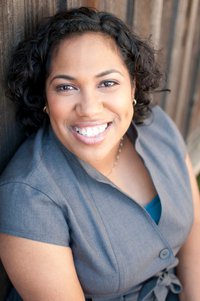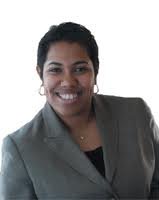
|
As tax time rolls around, many people have started to talk about buying a car. With the economy being the way it is, many of those people are considering buying a used car. There are some good deals to be had when buying a used car, but there are also some horror stories about deals gone wrong. Here are seven tips to help you choose the right car and make the right deal on your next used car purchase.
See what’s available on Craigslist.org and AutoTrader.com
Everywhere you look people are offering cars for sale. From cars parked on the street to a plethora of websites that allow sellers to post their cars. A couple of great websites to search for a used car are Craigslist.org and AutoTrader.com. Both sites list used cars from private sellers and dealers. Both sites are searchable by price and type of car. As you’re looking at cars don’t forget to check:
• Is the car currently registered? You want a car that is.
• Does the car have a salvage title? If it does, it means that the car has been in some kind of accident. You want a car that does not have a salvage title.
• How many miles does it have? The average is about 12,000 miles per year. Knowing how many miles the car has versus how many is should have will tell you a lot about the car.
• Does the seller have maintenance records? A car is a machine. The better the car has been taken care of the less worry you’ll have about potential problems.
• Does it have everything that you are looking for? Power windows/locks? An alarm? A CD player? Seat warmers? Drink holders?
Once you see a few cars that you like you’ll need to find out if the car is really worth what the seller wants to sell the car for. You are the one buying the car. You have a choice in what you want to buy. You have every right to get the most value for your dollar.
Check the Kbb.com value
To find out if the price the seller is asking for the car is reasonable, you’ll need to visit the Kelly Blue Book site at Kbb.com. Input the car’s year, make, model, miles, and body type to have the website estimate what the car’s value. If what the seller wants and what KBB says it’s worth are in the same range: hooray! If not, you’ll need to decide if you’re willing to try to haggle with the seller or if you want to move on to another car.
Print out everything
Once you find a car that you want to see, print all the paperwork relating to the car. That means you need to print out the original listing (people will ask for more once you are on site), the KBB information, and any other information that you have found relating to the car. Have everything in front of you before you call.
Start calling
Give the seller a ring. Make sure to ask any questions that you have before you make a plan to see the car. Also, listen to the person to whom you are speaking. Do they sound like someone you want to do business with? What does your gut tell you? You don’t want to put yourself in a situation where you might get involved in a bad deal or put yourself in physical danger. If anything about the person makes you uncomfortable, move on to the next car on your list.
Take a look-see
Show up on time and take a thorough look at the car. Definitely drive it on the street as well as the freeway. There is really no way to know how safe a car is without a mechanic taking a look at it, but there are some things to check for before you pay a mechanic. Check for:
How much tread is on the tires? Make sure there are no bald spots and definitely no metal pieces showing.
Is there an oil leak? Leave the car running and check the engine and on the ground under the engine. If you see drips of dark fluid or puddles of dark fluid then there may be a problem.
Are there any other leaks? Check for green fluid (coolant), red fluid (steering fluid), or any other strange fluids.
Does the car need an alignment? When you are driving, notice if the steering wheel is tugging in any direction. It shouldn’t be.
Does the starter work? When you start the car, is it difficult to turn the starter? It shouldn’t be.
How is the electrical system? Do the dashboard lights come on? The overhead light? The lights for the radio and A/C?
Are the lights functioning? Take a look at the headlights, turning signals, and brake lights. Make sure they all function appropriately.
Does everything else work? Turn on the radio, air, heat, and anything else you concerned about. Are they functioning correctly?
If you are okay with everything up to this point, it’s time to have a professional mechanic take a look at the car. This is where things can get rocky.
Get an AAA check-up
Having the car checked out by a professional mechanic should be non-negotiable. The worse thing that could happen is you end up buying a lemon because you didn’t want to spend the $90 to have a professional look at it. The American Automobile Club offers a great service for members looking for a used car. Any AAA-approved auto center will perform a once-over and provide you with a written report for only $90. Most mechanics have similar products. Ask at your favorite mechanic’s shop.
To get the car checked-out you’ll have to get the current owner’s approval. Some owners may become upset when they hear that you want to have a mechanic check it out. They will tell you that the car is sound, that there is no reason for a mechanic, that you don’t trust them. Of course you don’t trust them, you don’t even know them! If they won’t let you have it checked out, do not buy the car. Obviously, they know something about the car that they don’t want you to know.
If you are able to get a mechanic to look at the car and the report comes back clear, then you are on your way to making a deal.
Sign the paperwork
If everything is up to snuff, you’ll need to sign some documents to make the sale official. All the forms can be found online. You’ll need:
• California Certificate of Title or Application for Duplicate Title (REG 227)
• Signature(s) of seller(s) and lienholder, if any
• Signature(s) of buyer(s)
• Transfer fee
You may also need:
• Smog certification
• Use tax and/or various other fees
• Additional documentation
If you have any questions about the paperwork required, you should call the DMV at 1-800-777-0133 to speak to an operator between the hours of 8 a.m. and 5 p.m. Monday – Friday, Pacific Time.
Buying a used car can be an undertaking, but there’s no greater feeling than driving your new car knowing that you don’t have a car payment. Happy car hunting!
About Shay Olivarria
Shay Olivarria is a financial education speaker and the author of three books on personal finance. She has written articles for Bankrate.com, FoxBusiness.com and The Credit Union Times, among others. To find out more about her work, visit her at www.BiggerThanYourBlock.com









 By Shay Olivarria
By Shay Olivarria Decide who’s in
Decide who’s in




